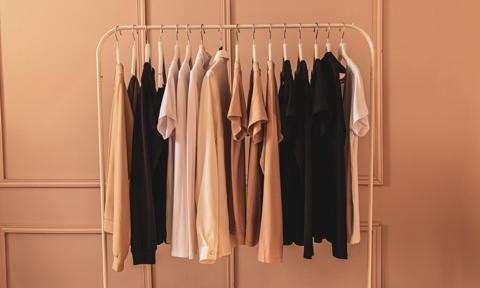
The year is 2022, and the impact of fashion on the planet is no longer going unnoticed. While corporations are complicit in the emission of harmful gases during production, us consumers aren’t exactly devoid of blame either. The estimated amount of 18.6 million tonnes of clothing clogging landfills currently can be directly attributed to the fact that consumers are known to throw away 60 percent of clothes within the first year of purchase. It has been found that if this continues, over 150 million tonnes of fashion waste will end up in landfills by the year 2050.
Worried? We should be. The use-and-dispose cycle of fast fashion has led to accelerated consumption that bodes dire consequences not just for the planet, but also its people. While buying less is one way to opt for a more sustainable way of living, it also helps to maximise the value of our existing purchases. Once considered a cardinal fashion sin, repeating outfits is an effective way to ensure we aren’t contributing to landfills. Just ask Duchess of Cambridge Kate Middleton, who is said to have repeated outfits as many as 77 times. Remember the caramel-hued Massimo Dutti coat that has shown up in her wardrobe four times in the past two years?
If you find yourself shying away from repeating clothes due to social stigma, we called in the experts to help you work your way through this mental block: Komal Hiranandani, founder of Dolce Vee Love that has organised celebrity closet sales for everyone from Deepika Padukone to Alia Bhatt, and Shubhangi Mishra, co-founder of sustainable label Sparrow that has been turning the spotlight on preloved clothes with a dedicated thrift platform of its own. Ahead, they share their best advice for making the most of the wardrobe you already own.
Every Reason Why You Aren’t Repeating Outfits: Answered
The need to repeat outfits goes beyond mere fashion choices and on to the real problem of higher rates of consumption, believes Hiranandani. She explains, “We’re buying more clothes than even before, and using each piece of clothing much less. Studies have found that clothing production doubled between 2000 and 2015, while the number of times a garment is worn before being discarded fell by 36 percent during that same time period.”
The reason for this complacency can also stem from the fact that most consumers aren’t aware that their discarded clothing can have a direct impact on textile pollution levels. “In the average consumers‘ minds, clothing isn’t considered the same source of pollution such as the negative environmenal impact of transport or electricity. However, the fashion industry generates more greenhouse gas emissions than all international flights and maritime shipping combined. The fashion industry uses as much water as 5 million people would consume each year, and around 20 percent of wastewater is attributed to fabric dyeing and treatment. Long story short: we simply don’t have the resources on our planet to keep consuming the way we have always been,” she elaborates.
Mishra agrees, and adds that the need to wear something new for every occasion can offer further impetus to the habit of hoarding. “The more someone hoards, the more are the chances of garments ending up in landfills even before their lifespans are over. It is a vicious cycle which is extremely detrimental to the planet if not curbed,” she cautions. If you are looking to make more sustainable choices for your wardrobe but require that last push to break free from the stigma, the experts share a handy guide to dispel your doubts:
“What If Someone Sees Me?”
“With environmental awareness increasing, having a capsule wardrobe with repeating and creatively mixed-and-matched looks signals to the world that you are a fashion-forward and climate-conscious consumer,” says Hiranandani, while Mishra believes, “You can wear the same outfit but style it differently to change the whole look and not have to worry about someone seeing you.”
“Does Repeating Clothes Signify That I Can’t Afford Something New?”
“On the contrary, many vintage pieces are priced higher than the original prices. If you are repeating pieces, it means you’ve invested in quality items rather than buying cheap products that you need to keep throwing out because they don’t last more than a few wears,” says Hiranandani.
“If I Wore This For An Important Event, I Need To Wait A While Before Repeating It Soon”
“This mental shift is key—it’s so wasteful for people to buy elegant outfits for special occasions, often with so much artistry, only for these clothes to be closeted away after one wear or to languish in storage,” she rues. Mishra adds, “If you aren’t confident about repeating a look from a special event, renting outfits is an excellent solution as you won’t need to feel guilty about not being able to rewear the same look.”
“This Outfit Will Look So Last Season.”
“It is natural to feel like there are so many new trends you could be trying instead of repeating, but it helps to bear in mind that trends are transitory, but your unique style is eternal. If something new has caught your eye that you really want to try, you can try borrowing it from a friend or buying a pre-loved option,” says Hiranandani.
When shopping for pre-loved clothing, she recommends choosing a quality-assured platform to avoid any post-purchase regret. “There are a plethora of amazing clothes with so much life left in them, just waiting for someone to give them a new home and wear them like they deserve to be worn—frequently and proudly,” she concludes.






